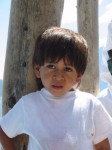 Unlearning Child Abuse (or go to prison) Children are not aware of the rightness or wrongness of their own abuse. They do not know that abuse is abnormal, or even that it is wrong. To a five-year-old, no matter how painful and frightening her life is, her life is normal. A sad and lasting fact of child abuse is that children blame themselves for the abuse they receive.
Unlearning Child Abuse (or go to prison) Children are not aware of the rightness or wrongness of their own abuse. They do not know that abuse is abnormal, or even that it is wrong. To a five-year-old, no matter how painful and frightening her life is, her life is normal. A sad and lasting fact of child abuse is that children blame themselves for the abuse they receive.
How can sex, drugs, and violence be unlearned by a ten year old child whose entire life has been just that? It takes years of therapy to change a child’s perception of an abusive past. It takes a great deal longer for an abused child to develop a healthy view of the world and a positive self-image. Our child protection systems don’t provide much therapy.
There is no book a child can go to, or code they are born with, that explains the abnormality of what is happening to them. Children can’t call their senators, or complain to the authorities (they can’t even tell their parents).
These children are invisible in our community, yet each one of us is directly responsible for their plight. They live under our laws; they go to our schools; they are convicted by our courts; many of them spend lifetimes in our prisons. They have no say in the laws and policies that rule their lives. Just like they had no say in the neglect and abuse that was their childhood.
Neglected and abused children make up a great majority of the crime, drugs, and violence we experience in our communities. Over fifty percent of the children in the juvenile justice system have diagnosable mental illness.
Ninety percent of the juveniles in the Juvenile Justice System have come out of the Child Protection System (Minnesota’s Chief Justice, Kathleen Blatz). Over 90 percent of the adults in the Criminal Justice System come out of the Juvenile Justice System. Justice Blatz (and others) call it a prison “feeder” system.
The United States is the only nation in the world to build prisons based on failed third grade reading scores.
Behaviors learned by abused children to stay alive in toxic homes are terribly counter-productive once the child is out of the abusive circumstances and trying to live a normal life. The behaviors developed for staying alive and avoiding pain dominate and thus can become significant detriments to getting along in society. As a matter of fact, for many troubled youth, their explosive responses and pain avoidance behaviors define them as social misfits and send them to prison.
There has got to be a better way to deal with abused and abandoned children in our communities.








